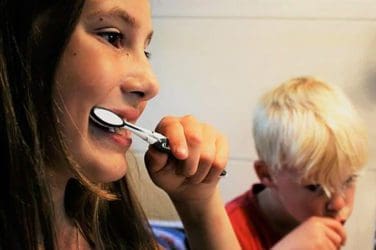words Alexa Wang
Nursing and healthcare training is now predominantly done online, and this is a sector that looks set to change the way that these type of practical training courses are done. The idea of training to be a nurse online is somewhat a new feature of modern higher education and yet it is the online training and education sector that is the fastest growing and the most in demand currently.
It would seem that nursing, as with many of the other courses out there, had no choice but to go online as this is where students now want to learn, and it is the predominant education platform across the world. In addition, for nursing and those sectors where there is a high demand for qualified staff, online is the only way that the numbers of students can be reached. This article will examine why nursing has found its place online and how this form of training is growing in the current climate and expected to produce over 100 000 nurses a year in America.

Why Nursing had to go Online
Nursing had no choice but to go online as the current demand for nurses would never be met by the traditional training methods alone. For over ten years and way before the recent pandemic that has been blamed for all the changes in nursing and nursing training, the US has been facing a shortage of nursing staff like no other country on earth. The standards that have been set and maintained over many decades for provision of top-quality healthcare for the American people have been under threat. The nursing and healthcare capacity has been adversely affected by the ongoing shortages of professional nursing staff. This was merely exacerbated during the pandemic as many nurses left the profession and others simply moved off the front line. Furthermore, the baby boom generation has aged and there are now more people needing proactive healthcare than ever before in American history. The bottom line is that we need more trained and qualified nurses.
The conservative estimates are that over one million registered nurses will be needed by 2030 in America alone. This is a substantial number and until the rush to train and educate online that was caused by the recent pandemic, there was little idea how this demand for trained and registered nurses could be met. However, as more courses and colleges went online and began to really evaluate the boundaries of online learning it became apparent that this could be the solution for the nursing sector. Online learning has since boomed, and nursing has been at the forefront of some of these changes. The hybrid and blended courses have gained popularity and it now looks as if the massive, required numbers of trained and registered nurses can be met and the standards maintained. The idea or nursing has been to use the latest technology but also to keep the face-to-face component that is an essential part of the nursing profession.
The number of new and existing nursing courses and institutions that have now gone online and provide a range of opportunities to access and complete the BSN has massively risen. Elmhurst University is a notable example of the recent online offerings in this regard and a tone has been set for further improvement and a broadening of the current courses. Both for those who are on a nursing study and career pathway and also for those who are changing their career and have a previous accepted degree in a separate subject.
It was first thought that not all courses could be taught online and especially the more practical subjects. Automotive technology, art and design courses and laboratory and clinical instruction were all considered as those courses that had to be taught in person. Lecturers wanted their students under the actual hood of the car or able to add the catalyst to the actual test tube in the laboratory. Nursing was initially considered by many to be in this category of unteachable online subjects. This was a misnomer, and the current range and professional nature of online nursing courses has been one of the success stories of the stampede towards teaching and learning online. It has been through this innovation and perseverance that the hybrid and blended course can be used for all these practical subjects and more.

The Hybrid and Blended courses that are now commonplace in nursing
Based on the fact that nursing is a significant practical profession, the training thereof needed to be considered in detail if it was going to meet all the needs of learners online. This has clearly led to the nursing education sector leading the way in the design and implementation of the hybrid or blended learning methods.
A blended course is a mixture of both online and offline teaching methods and a hybrid one is a mix of all the useful learning methodologies for you that will be suited to the material and the people being trained. Nursing has used both these methods to reach a diverse and varied audience.
The theoretical aspects, ethics, biology, physiology and philosophy of human health and well-being can all be taught and learnt online, using the so-called traditional methods, lectures, notes, reading, PowerPoint, while the more practical aspects of health monitoring and physical checks are done in a virtual setting or in person during face-to-face placements. The ability to use all these methods in a seamless manner has led to some of the most universally recognized means of imparting knowledge and training. The response in the nursing sector has been immense and students, nurse and healthcare instructors and patients alike have noted that there is a new professionalism in the emerging nursing. Although much of this can be regarded as due to the training methods as elicited herein, it is also down to the new and improved technologies that have been introduced to the nursing sector.
Nursing and Technology
The only way that hybrid and blended learning can be professionally provided is with the use of modern technology. The online component of all these courses can be as interactive as the face-to-face sessions using virtual reality classrooms and chats and live video streaming. Augmented reality and artificial intelligence will also be used to make teaching more seamless and provide immediate responses to online questioning. It is this self-same technology that can be used for practicals and experiments where required. While the face-to-face and placement opportunities will then be used to fine tune the aspects of the courses that need a hands-on approach, or the teaching of the interactions and behaviors required to deal with patients, clients and customers, ‘the human component’.
In conjunction with its use in training and teaching in nursing, Information technology has also modernized the actual practice of nursing. Remote health monitoring technology is on the rise, wearable health tech for monitoring and medication is the future for all and this in itself has also changed the manner in which nursing is learnt and practiced. In order for these technological advancements available to fit and work towards improving healthcare and nursing specifically, they must be part of the foundational educational material and training for the BSN, or any bachelors nursing and health care qualification. The manner in which records are kept, the use of big data, telehealth and mobile health apps are all technological advancements that suit hybrid learning to both use and assess such technology.
Nursing is a career that is moving towards increased technological involvement and this is clearly being seen in the manner that nursing is now predominantly taught. The education and development of nursing is arguably going to remain online for the foreseeable future. This has also thus necessitated the need for nurses, both current and developing or in training, to be aware of and able to use this technology. Being a technophobe and a nurse in the current climate is simply not possible, full training and support is necessary. Nursing as one of the world oldest professions has moved at a rapid rate of knots into the future and this future is online.
Conclusion
Nursing training is expected to remain in high demand and as noted by the Bureau of labor statistics there will be over 175 000 openings a year for registered nurses in the American healthcare sector until 2029. The only way to meet these numbers is to ensure the continued growth of online, hybrid and blended learning for nursing and healthcare. The innovation around remote technology for health monitoring and checks will also play a significant role in this regard. Nursing is thus expected to continue to be taught using a mix of online, remote, hybrid and blended methods of instruction. While it may have seemed strange to begin with, that online nursing has been able to make such a notable impact on the profession, it is now accepted that it is here to stay, perhaps even more so for nursing than any other field or profession



















